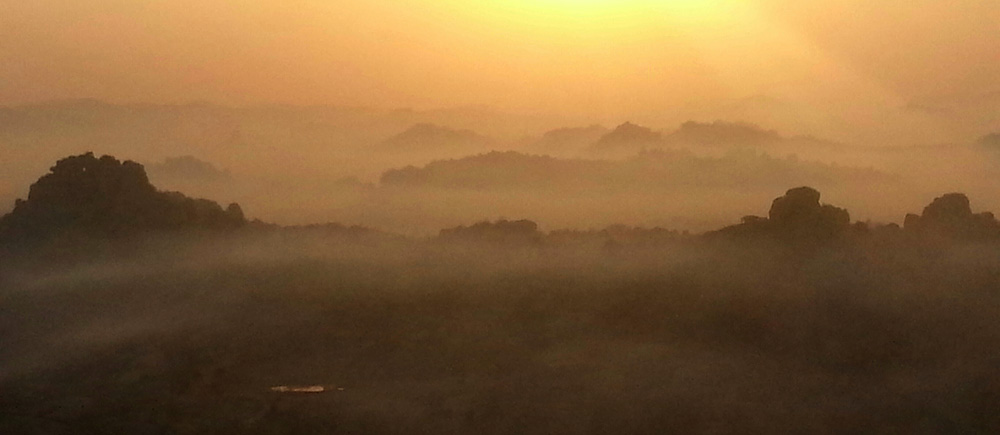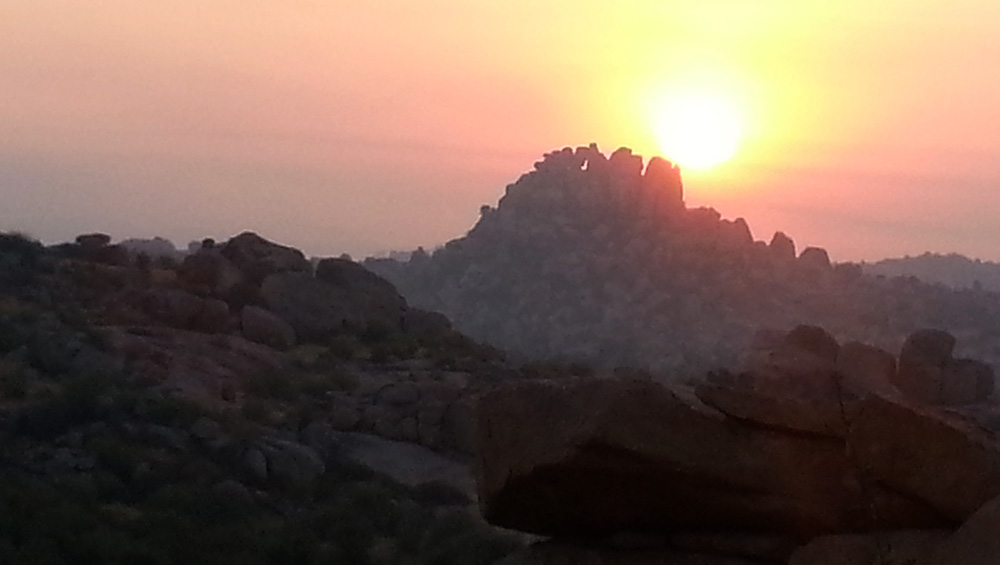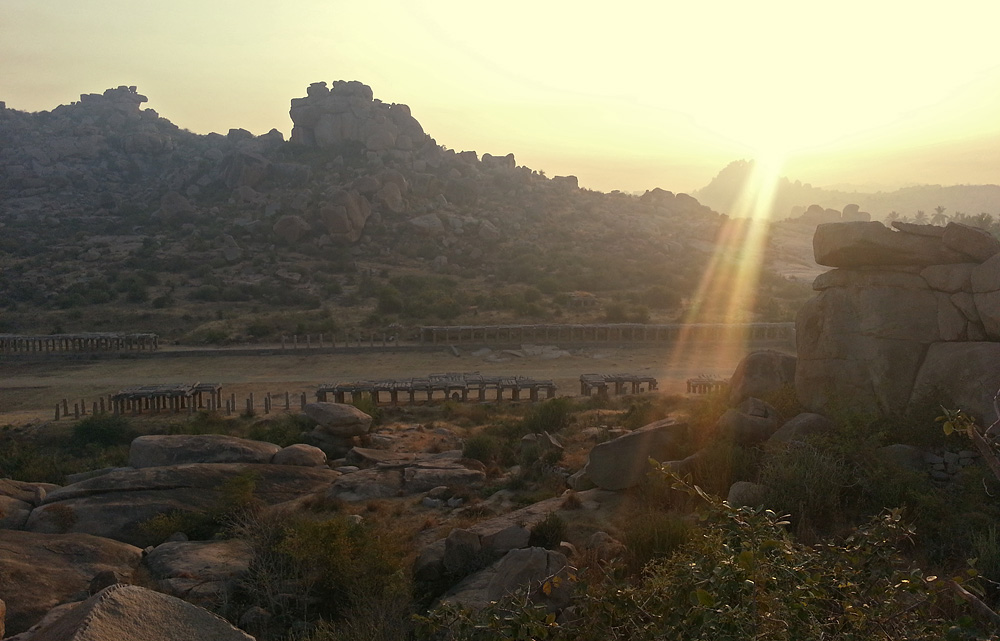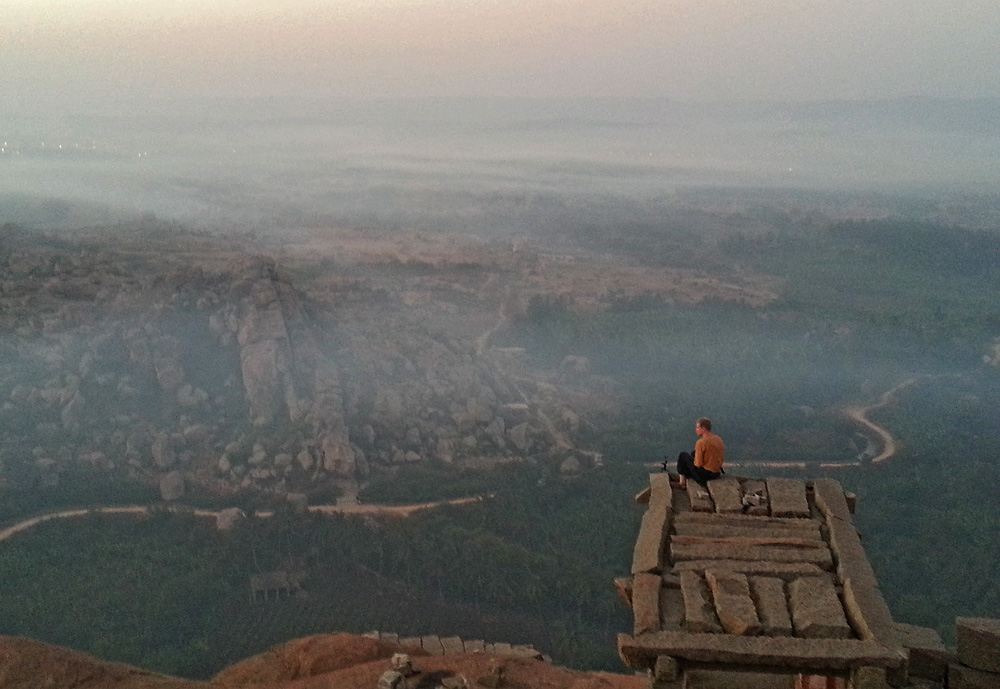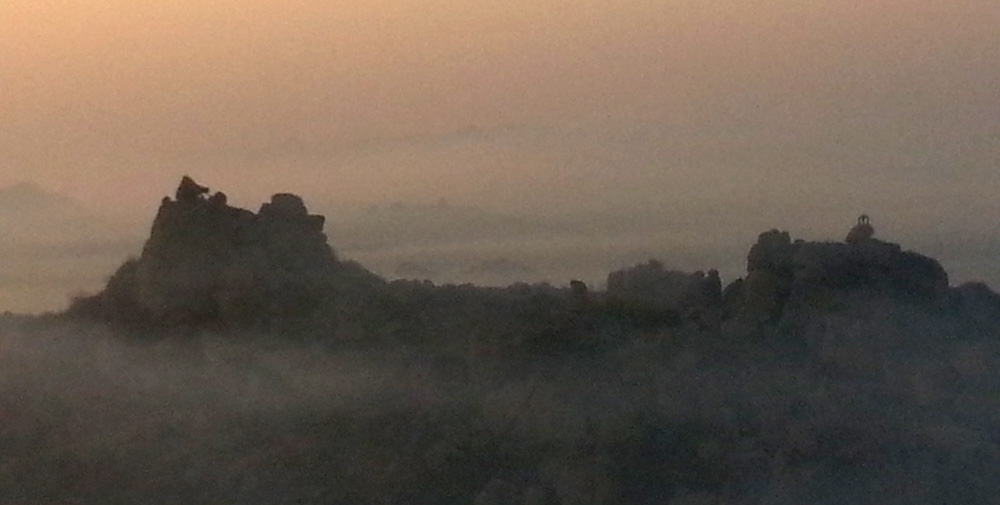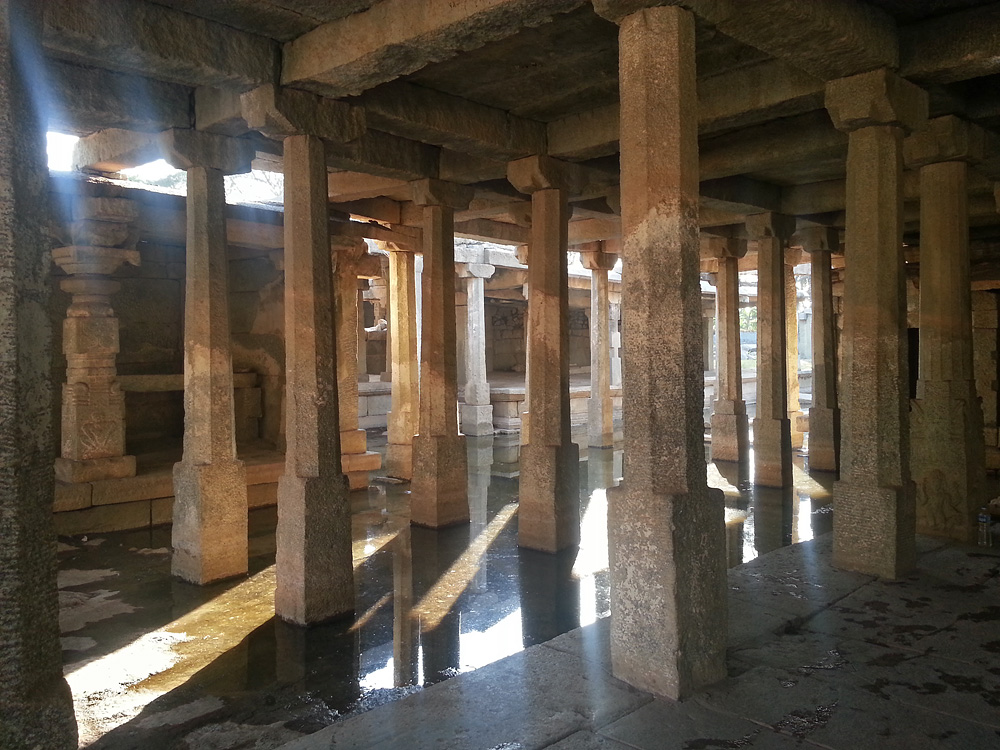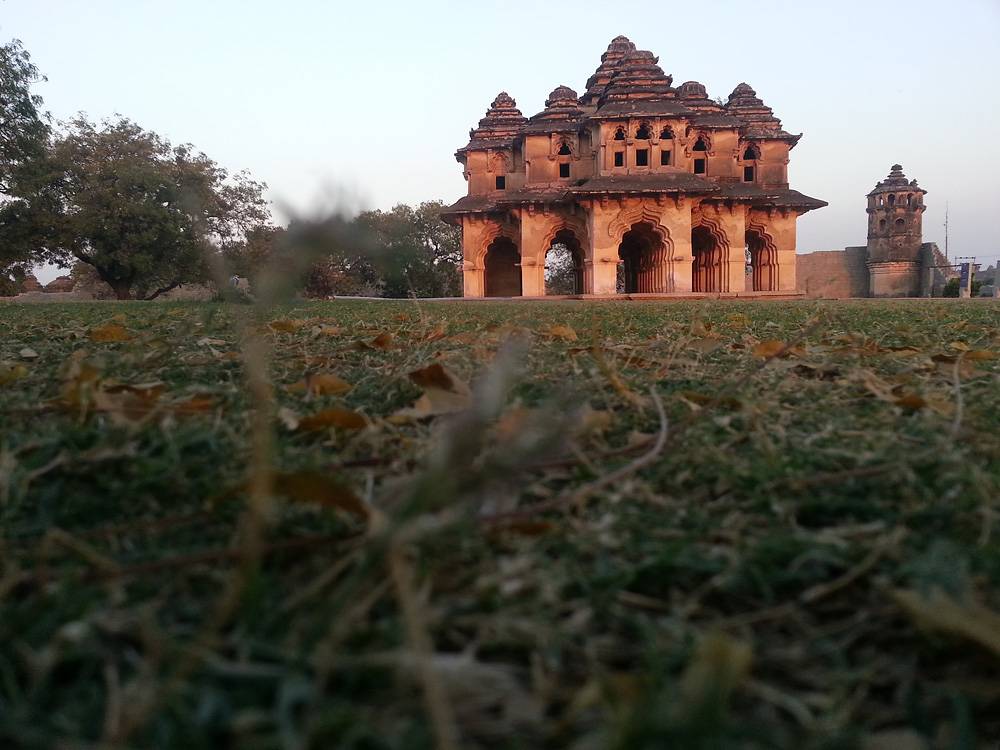A tryst with cell-phone camera & photography in Hampi.
I was at Hampi last weekend, leading a photography tour to capture the heritage sites and landscapes of the ancient town. While I was there, I decided to use a cell-phone camera seriously for the first time to see if it can be a viable tool for photography during impromptu situations. Here is a collection of images I made during the three days, and my analysis on using a cell-phone camera.
I used a Samsung Galaxy SIII for this shoot, but this isn’t meant to be review of this specific phone camera. Also, some of these images were also shot using digital zoom, which deteriorates the quality of images considerably. These images are not meant to be assumed as a demo of phone-camera’s image quality in general.
A sunrise in Hampi, captured with a cell-phone camera.
Another sunrise image, captured with a cell-phone camera.
A witness to some beautiful phenomenon of light filtering through the atmosphere? Nope. It is just lens flare we are talking about!
Pros of Cell Phone Camera
- Camera doesn’t matter! As the old saying goes, it is the person behind the camera who makes the images. But this is only half-truth. For the other half, see the ‘cons’ section below. Yes, you can of course make all the compositions you want to make, and make use of the available light without worrying about the kind of camera you have. Cell-phone camera included.
- Portability. No one can appreciate the portability aspect of a cell-phone camera like a DSLR user can. These cameras are small and easy to carry around and there is no need to lug them in large, expensive Lowepro camera bags.
- Discreet. Cell phones obviously do not attract the kind of attention that a large DSLR would. This is not to indicate that the photographer can conceal himself/herself when creating images. But you don’t end up attracting too much unwanted attention because of your fancy equipment.
- Availability. The first time I started taking my phone-camera out was when I wanted to capture/document something but did not have a camera handy. The cell-phone is always in the pocket and always available. So the next time there is a need to shoot something, there is no need to worry about the camera being left behind.
- Settings. Despite being a tiny camera, they have some useful settings handily available. Like exposure compensation, panorama mode to name a few.
- Image Size. The 41 megapixel Nokia Pureview may be just an aberration. But most phone-cameras now have 8mp or higher. This means you can easily make an image from a phone-camera into a computer wallpaper or even an A4 print without much difficulty.
Watching the landscapes of Hampi. Captured on a cell-phone camera.
Landscapes of Hampi, captured on a cell-phone camera.
Cons of Cell Phone Camera
- Camera does matter! There are many things you can’t do with a cell-phone camera. You don’t have flexible optical zoom and you can’t shoot too many things that need plenty of magnification (such as wildlife). You can’t shoot much in low-light as well. There are a lot many things that a good camera can do that a cell-phone camera can’t, such as controlling depth-of-field.
- Image Quality. If there is one thing that makes me think before using a cell-phone camera, it is image quality. The images I got from my phone were did not have enough details, in comparison with a DSLR. Sometimes they appeared as if they were upscaled and pixellated. This may vary from cell-phone to cell-phone, but I am going to assume that there won’t be a remarkable difference between them all. The quality of images from the most inexpensive DSLR is still well ahead of what a camera-phone can produce.
- Handling and accessories. With an established photography market and a history of several decades of existence, DSLRs have many accessories that make a photographer’s life easy, which may not be available with phone-cameras. Some of these may change in the days to come. Some good examples are sturdy tripods, optical filters that can’t be digitally recreated easily, to name a few..
The monuments of Hampi, photographed with a phone-camera.
Lotus Mahal, Hampi, photographed using a cell-phone camera.
Conclusion
Cell-phone cameras are a handy portable tool that can be used in situations where you don’t have a camera or can’t carry a camera. It can be used in situations where large cameras can create trouble and attract unwanted attention. The images quality of cell-phone cameras today is not too bad, and are acceptable for most casual and non-professional uses. But they can get nowhere close to the quality of larger cameras and do not offer much flexibility. I wouldn’t use a cell-phone camera in situations where quality of images matter to me, but otherwise wouldn’t mind clicking some photos here and there.
